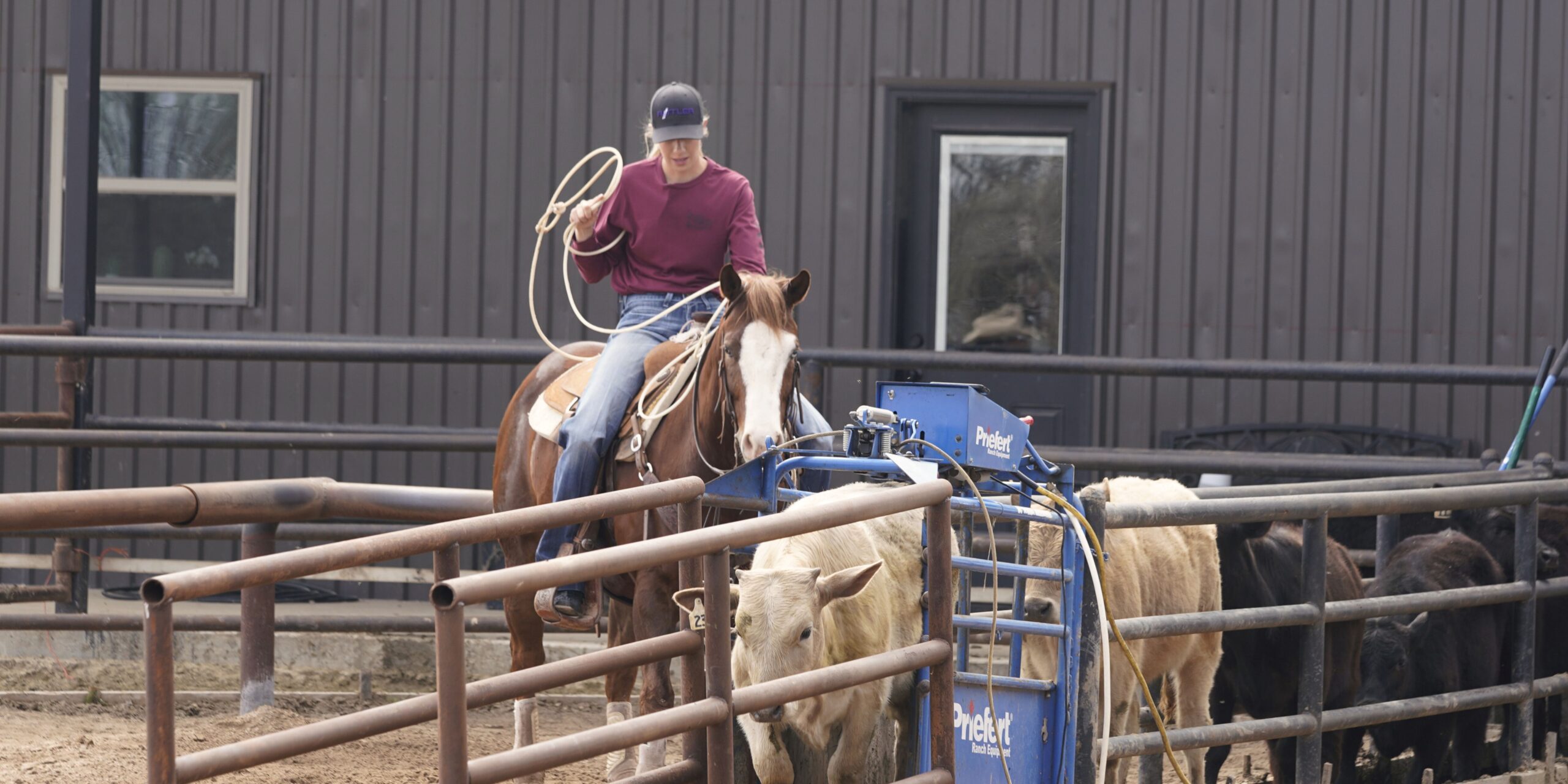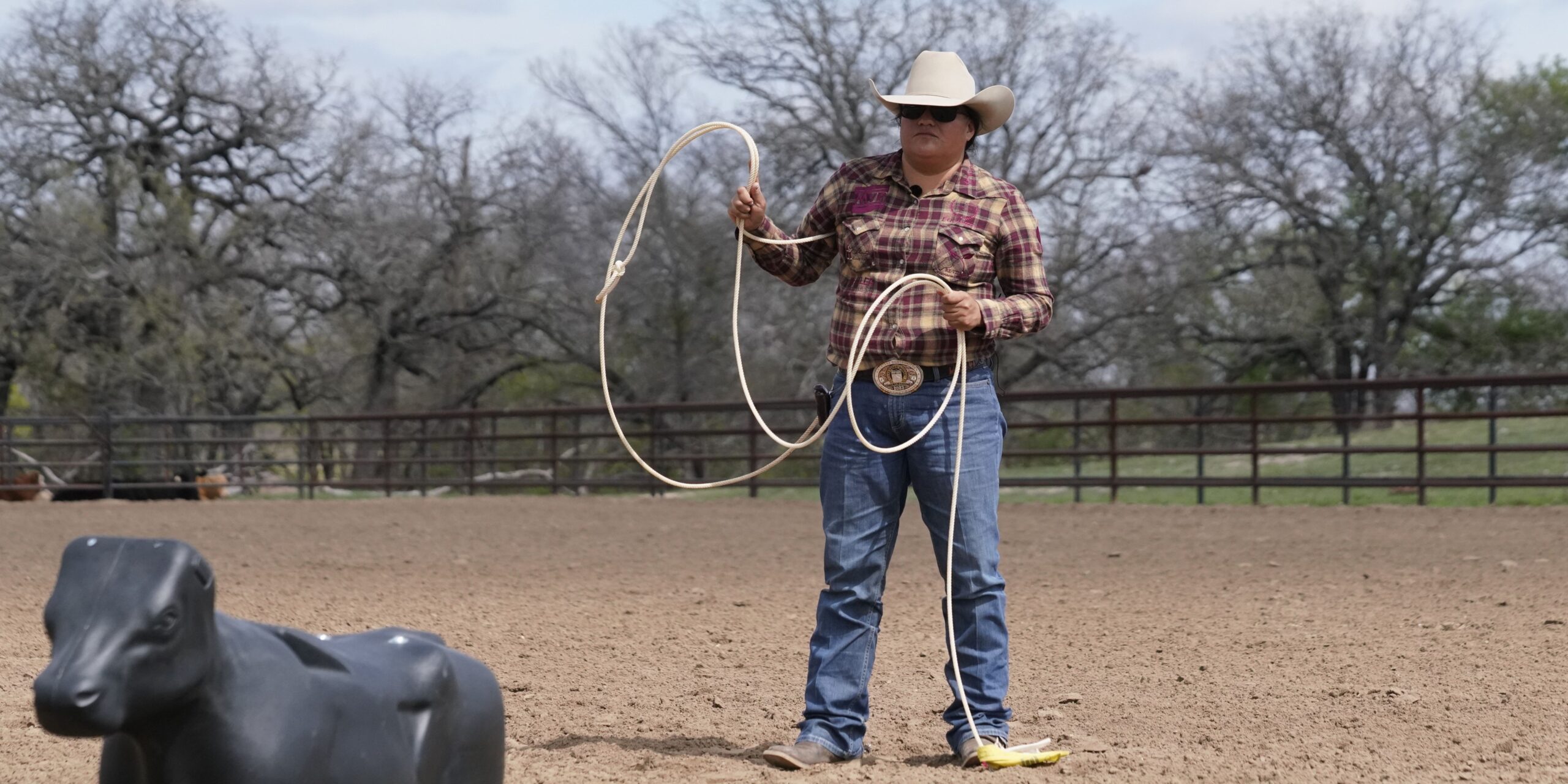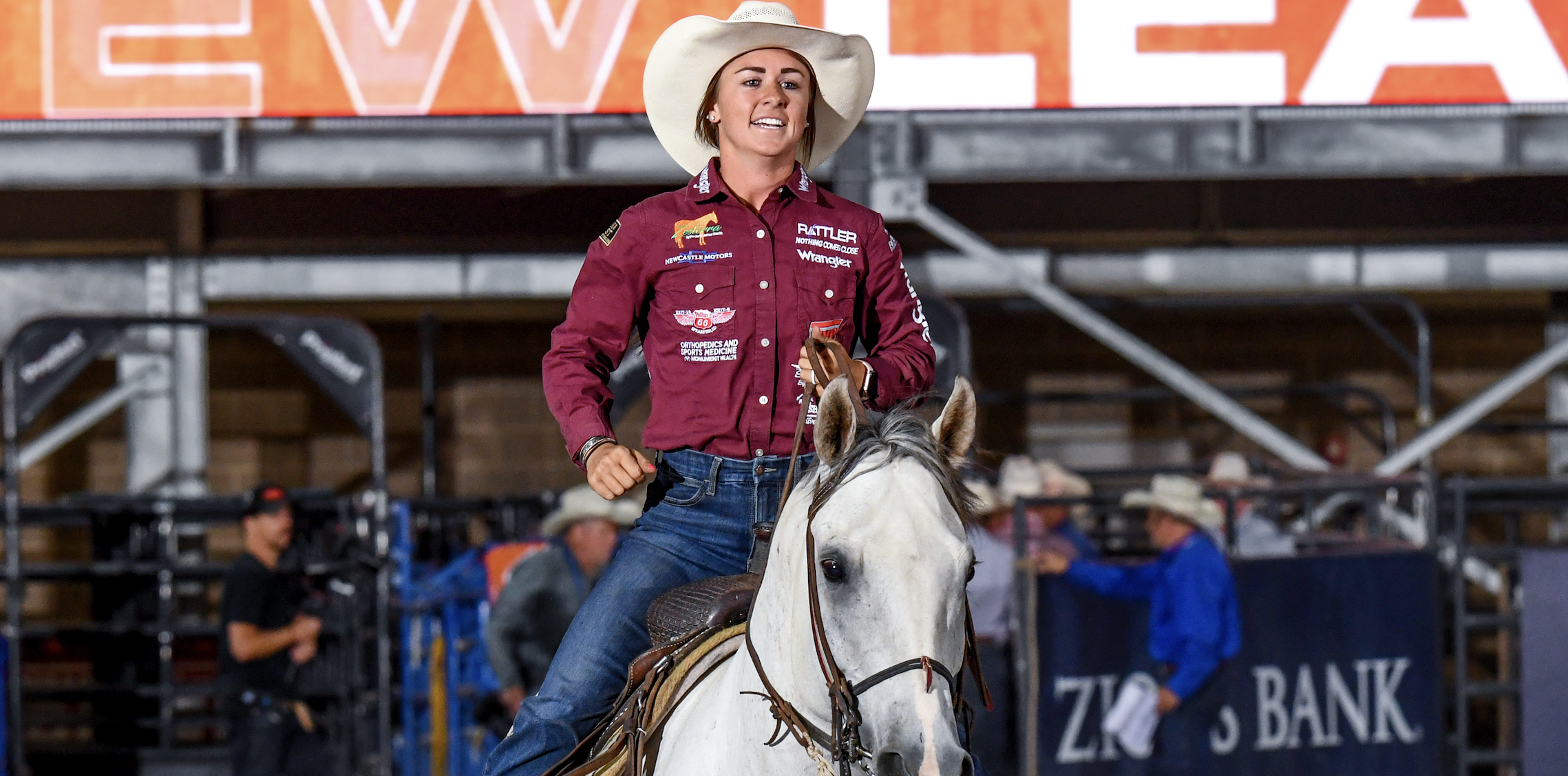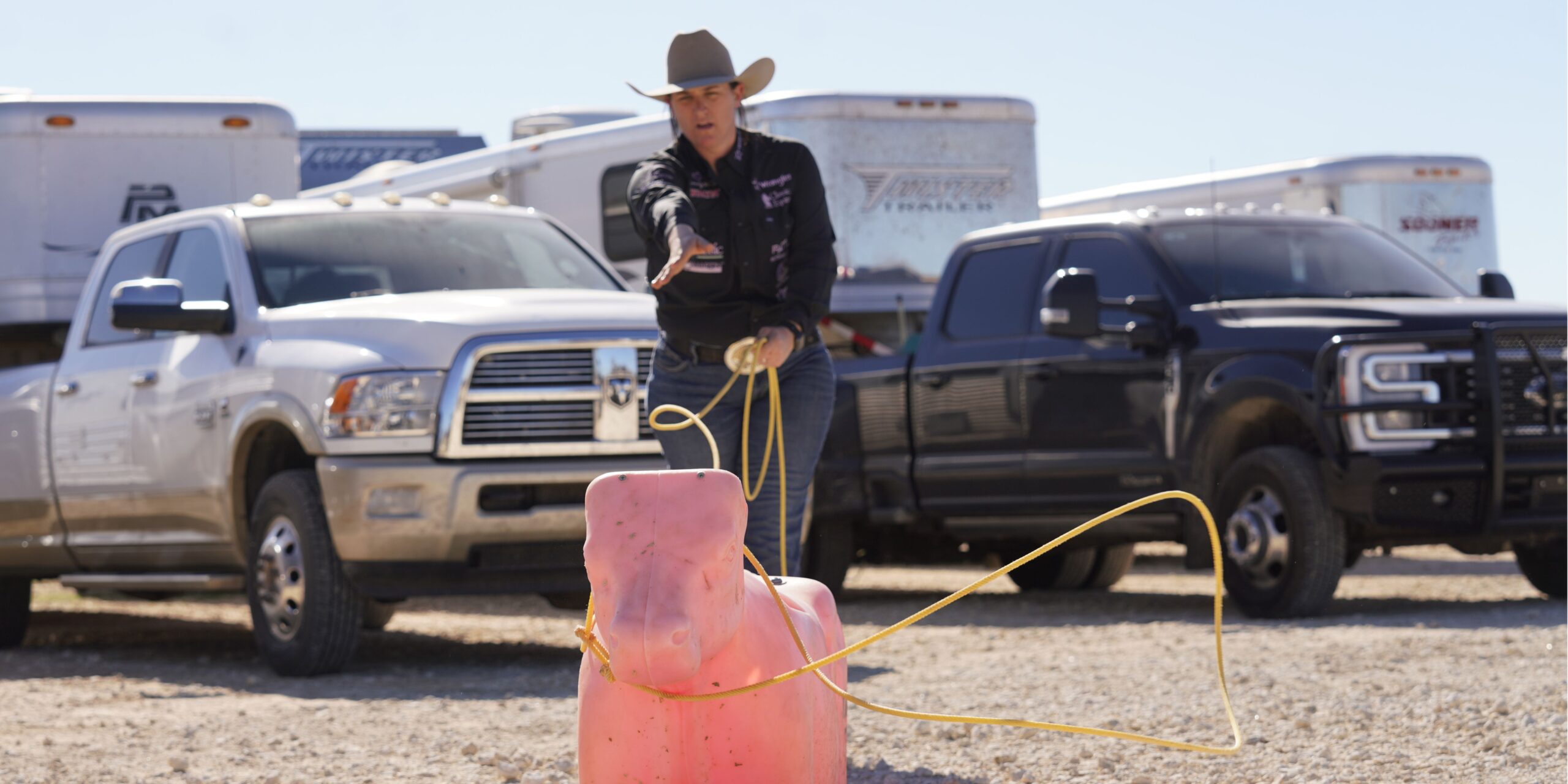I’ve been riding an outside horse that would drop his hip in the corner, responding to the bang of the gate or the movement of the calf, rather than his rider’s left hand. When he’d drop his hip and try to pull there, his rider would feel late. So she’d drop her rein and send him out from under her, and she’d be behind. He didn’t have himself locked onto the cow, and he’d send her out the back because he’s fast and powerful. If I’m finding my calf with my rope, I can keep my horse between the bridle reins and my legs. Here’s how I’ve been working on it.
Objective
I work on finding my calf with my rope and keeping my horse with me—between my legs and between the bridle reins—at the pace I want him to go. This will help me stay with him coming out of the box.
In the Corner
When I have my horse in the corner, the gates or the calf need to not mean for him to go. So I will use a Priefert Score Chute to bang those gates with the calf loaded as many times as I need to. If he drops his hip, I pick that hip back up with my right spur in his side and hold him up. I do this until he doesn’t respond to the chute.
Adding Motion
When he’s not responding to the gate, then I need to be the one sending him, at the pace I ask. I do this at a walk, and I pick him up as I near the chute. I’ll do that for a while without opening the gate or calling for the calf.
Adding the Throw
When he’s calm and listening, just walking up from the corner underneath my rope and between my legs and the bridle reins, then I’ll add the calf into the mix—still at a walk. I will send my horse from the corner, start swinging my rope to find the calf, then nod as I’m about halfway up the box. As I get to the mouth of the box and the calf leaves, I will throw my rope.











